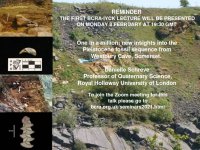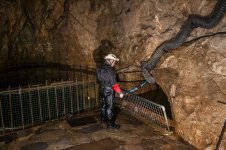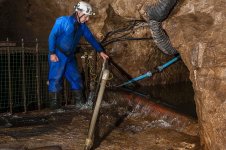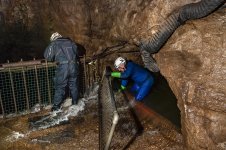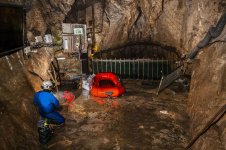As a contribution to the International Year of Caves and Karst (IYCK), BCRA is hosting a series of online seminars that emphasise the scientific importance of caves and karst, and which describe ways in which BCRA supports cave research. The seminars will be held on the second Monday of each month in 2021, 19:30?21:00 UK time, commencing in February. These talks will use the Zoom platform.
So far we have 2 seminars on the calendar:
Seminar 1 ? Pleistocene fossils from Westbury Cave
One in a million: new insights into the Pleistocene fossil sequence from Westbury Cave, Somerset
Speaker: Danielle Schreve, Professor of Quaternary Science, Royal Holloway University of London
Monday 8th February 2021 Starting time: 19:30 GMT.
This talk will highlight the important resources contained within cave sediments and how the information that can be gained from these sediments can aid our understanding of fast changing palaeo-environments and palaeo-climates during glacial/interglacial episodes. Understanding the past is key to our understanding of the future!
Seminar 2 ? Hydrology of the Castleton Area
Castleton, Derbyshire: The world's most complicated simple karst hydrological system?
Speaker: John Gunn, Honorary Professor, School of Geography, Earth & Environmental Sciences, University of Birmingham
Monday 8th March 2021 Starting time: 19:30 GMT.
This talk will examine the complexities of underground water movement in limestone areas and will show how data collected within caves contributes to understanding the flow from springs and flow in the rivers that they supply.
For more details on how to join, please visit: https://bcra.org.uk/seminars2021.html
So far we have 2 seminars on the calendar:
Seminar 1 ? Pleistocene fossils from Westbury Cave
One in a million: new insights into the Pleistocene fossil sequence from Westbury Cave, Somerset
Speaker: Danielle Schreve, Professor of Quaternary Science, Royal Holloway University of London
Monday 8th February 2021 Starting time: 19:30 GMT.
This talk will highlight the important resources contained within cave sediments and how the information that can be gained from these sediments can aid our understanding of fast changing palaeo-environments and palaeo-climates during glacial/interglacial episodes. Understanding the past is key to our understanding of the future!
Seminar 2 ? Hydrology of the Castleton Area
Castleton, Derbyshire: The world's most complicated simple karst hydrological system?
Speaker: John Gunn, Honorary Professor, School of Geography, Earth & Environmental Sciences, University of Birmingham
Monday 8th March 2021 Starting time: 19:30 GMT.
This talk will examine the complexities of underground water movement in limestone areas and will show how data collected within caves contributes to understanding the flow from springs and flow in the rivers that they supply.
For more details on how to join, please visit: https://bcra.org.uk/seminars2021.html



